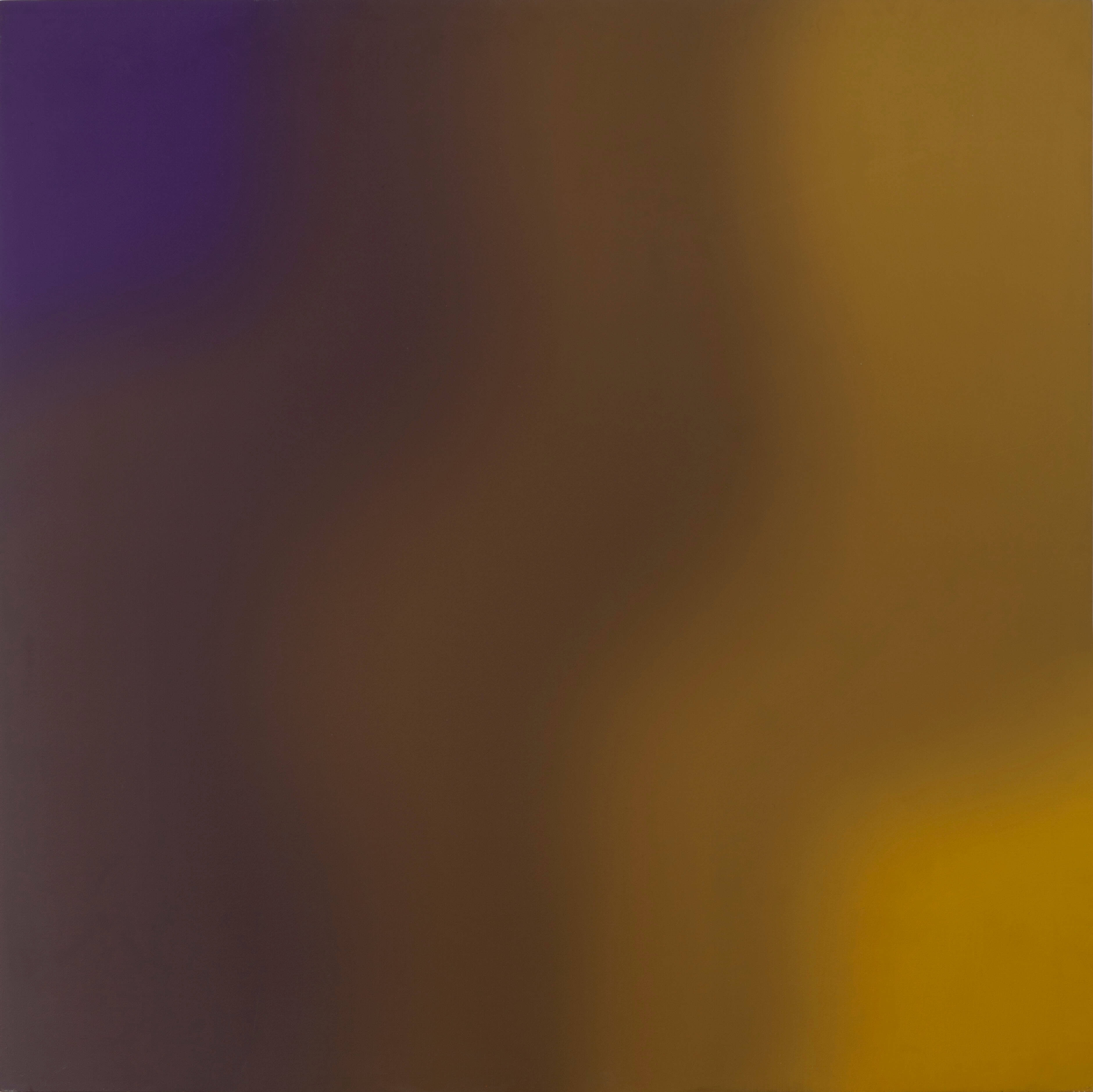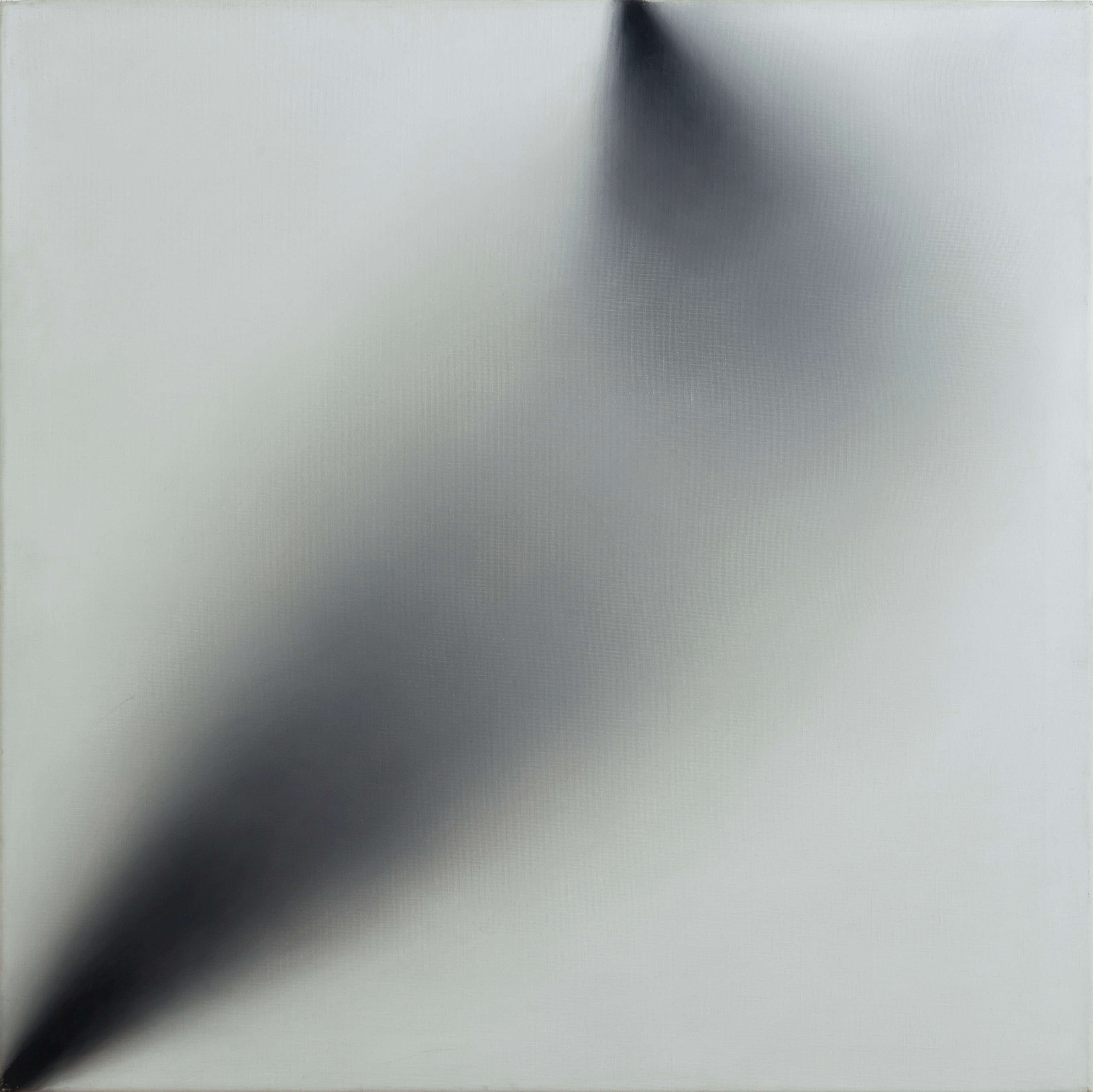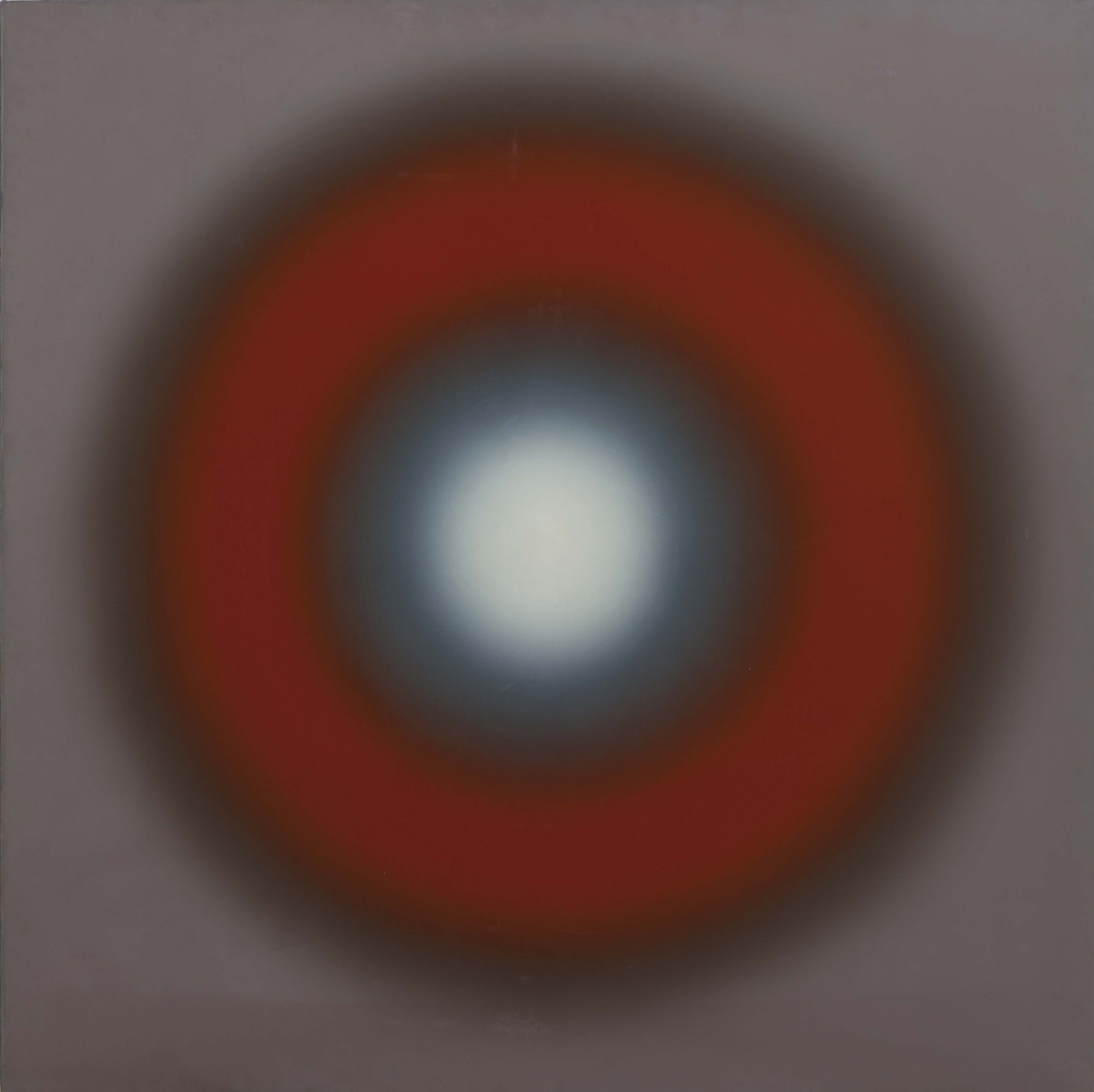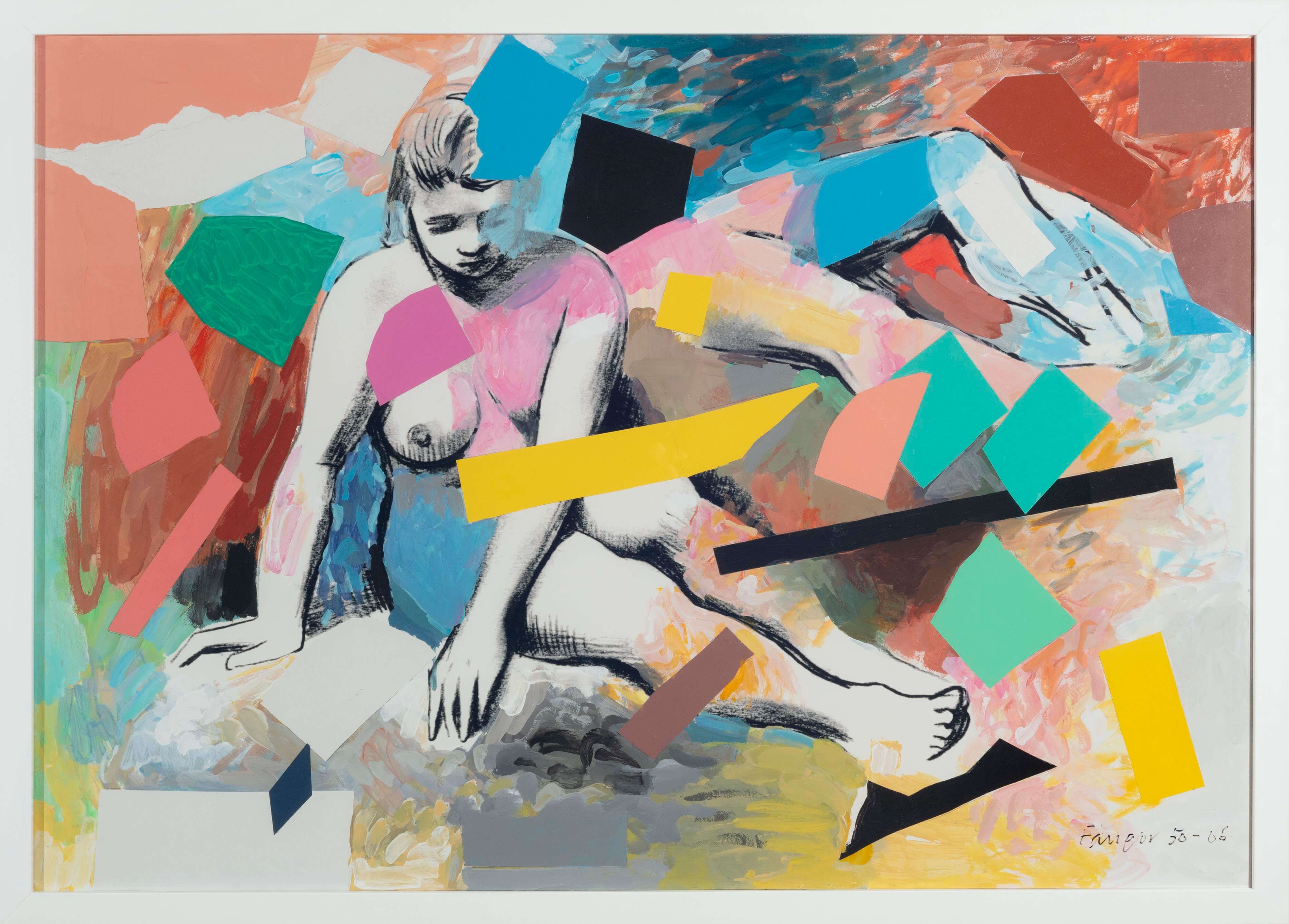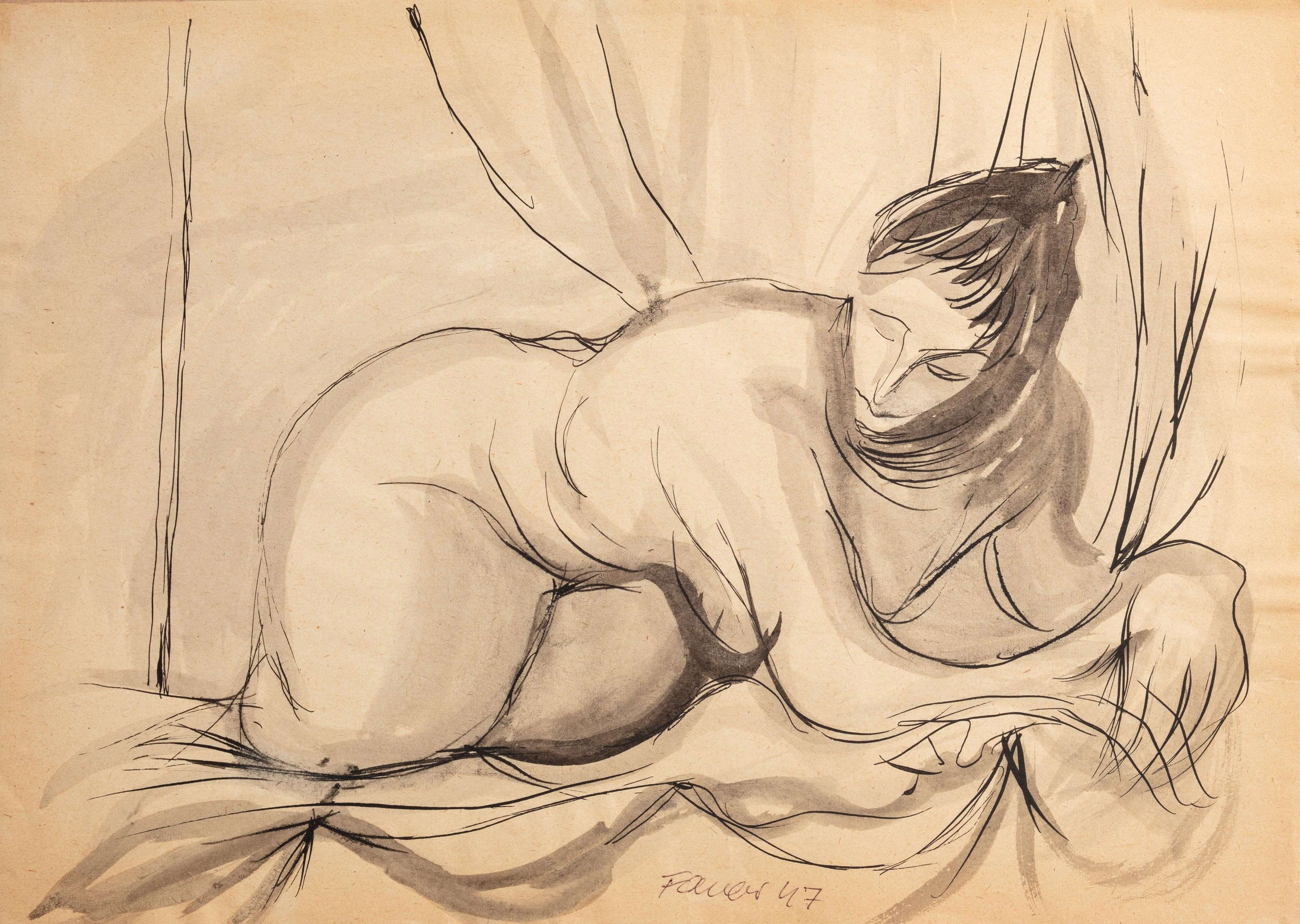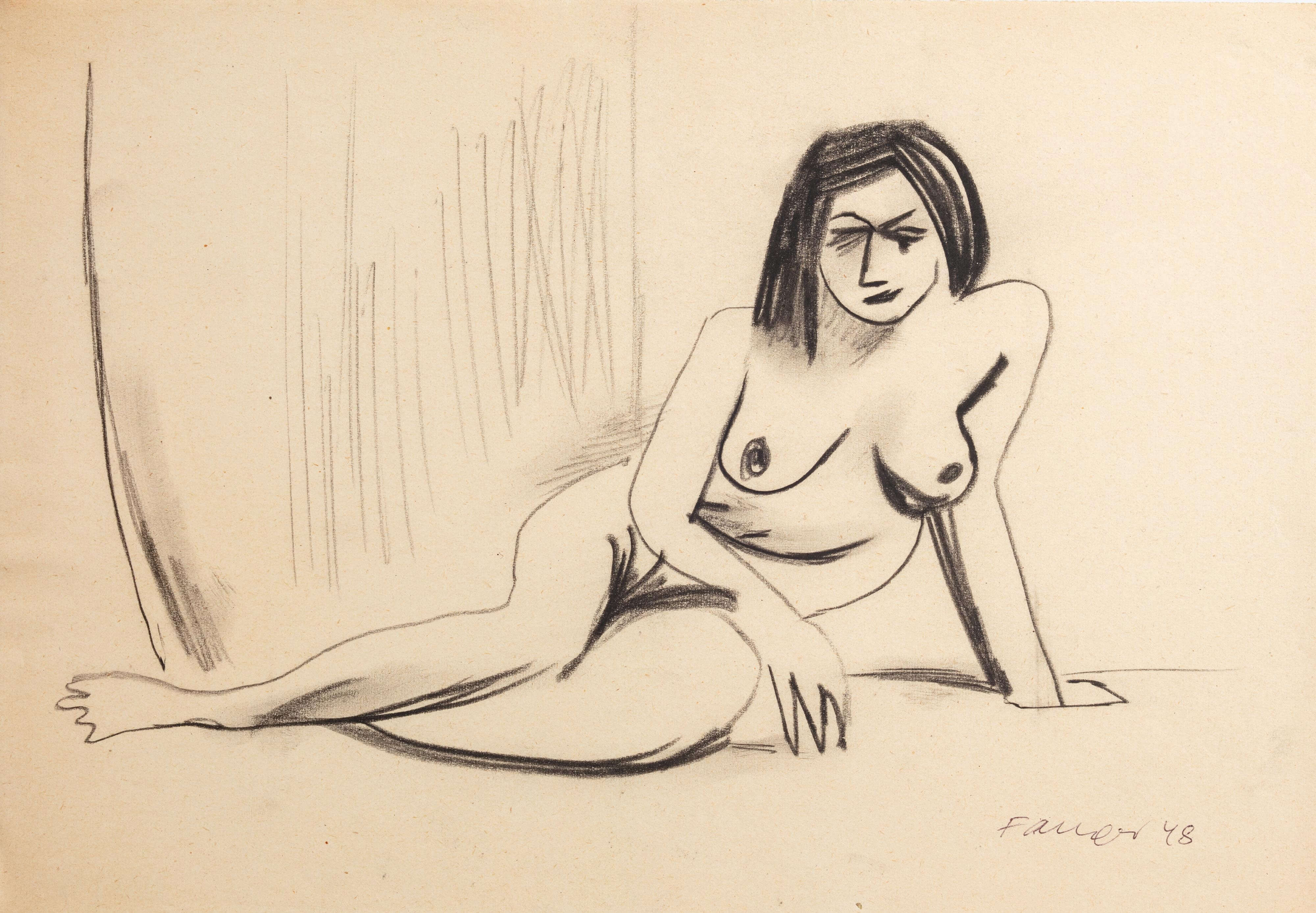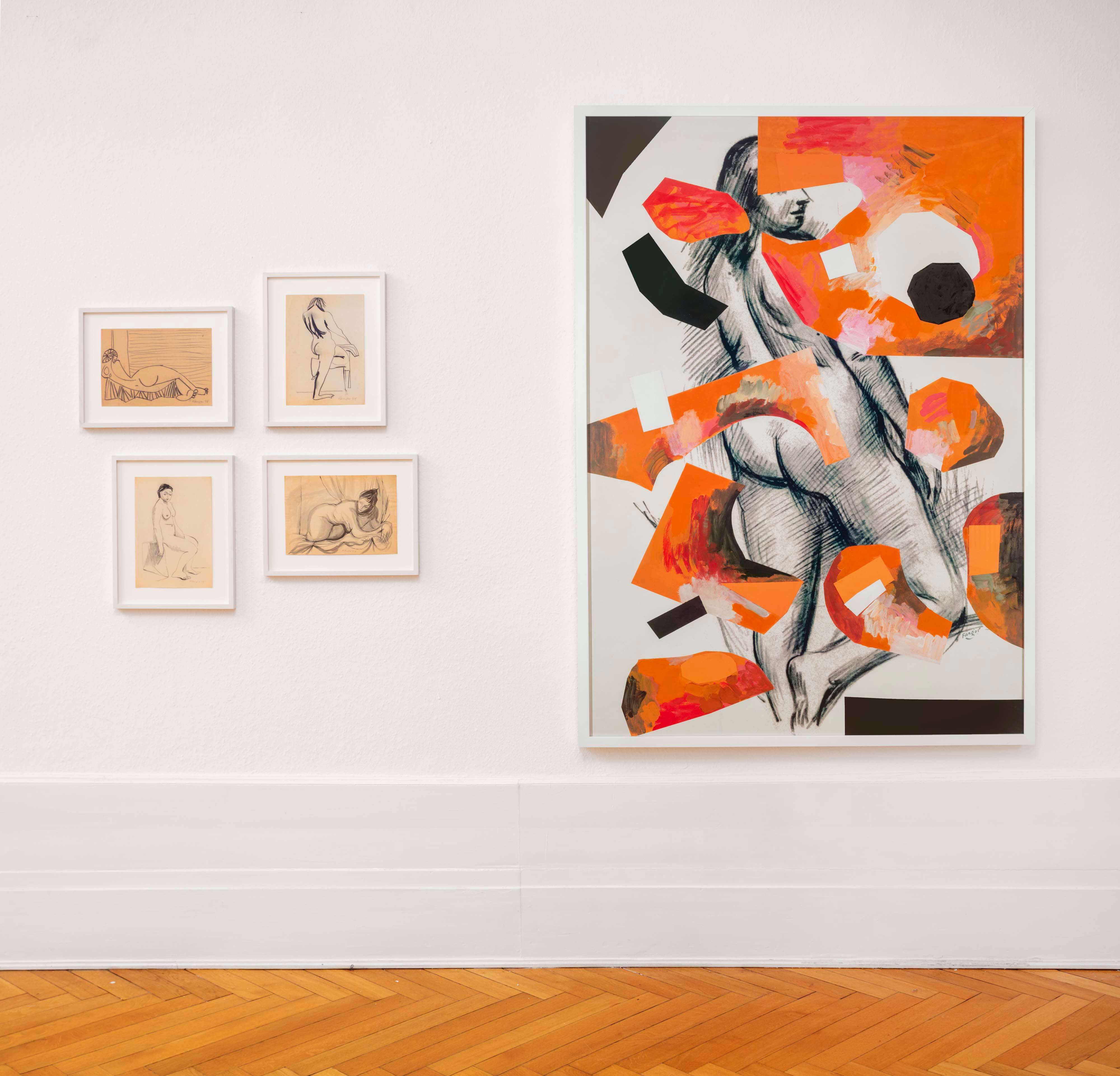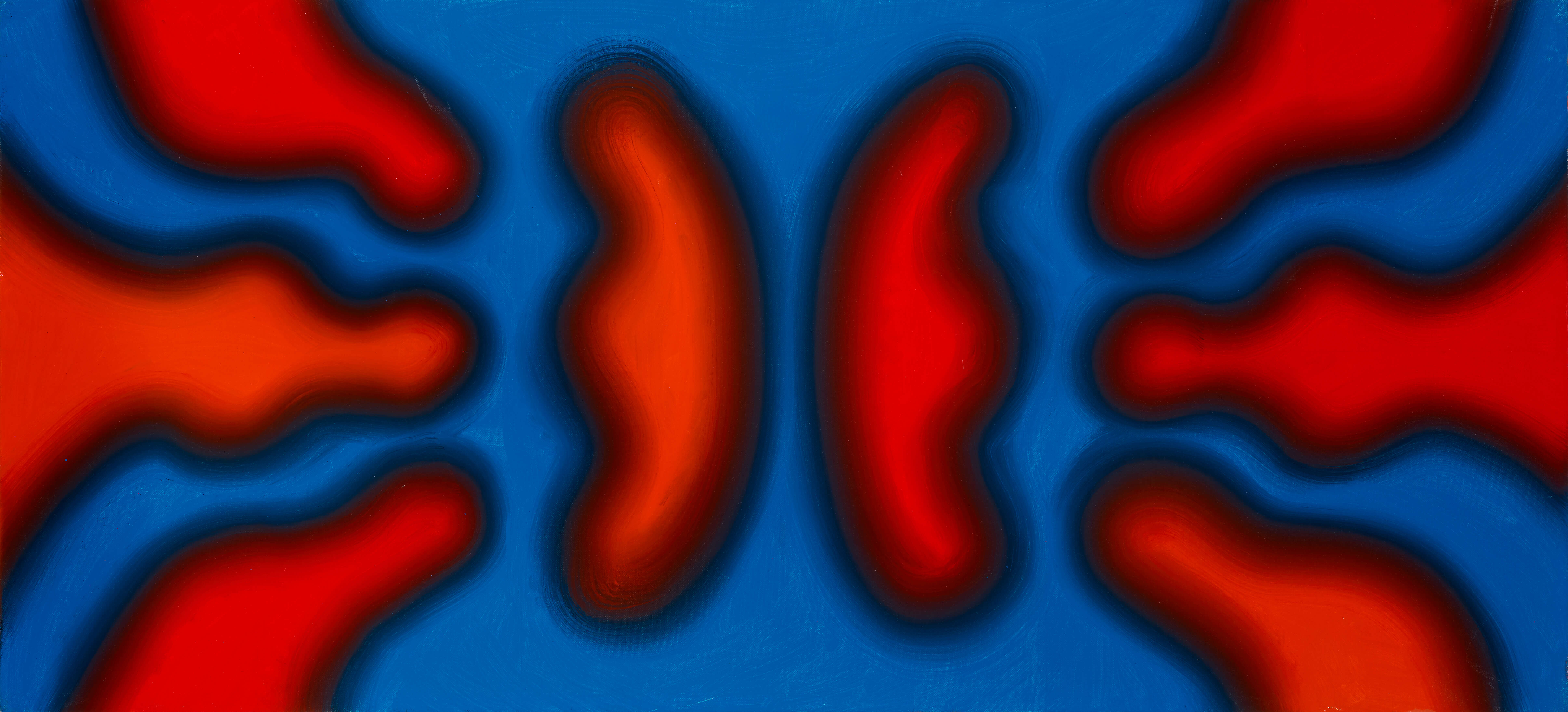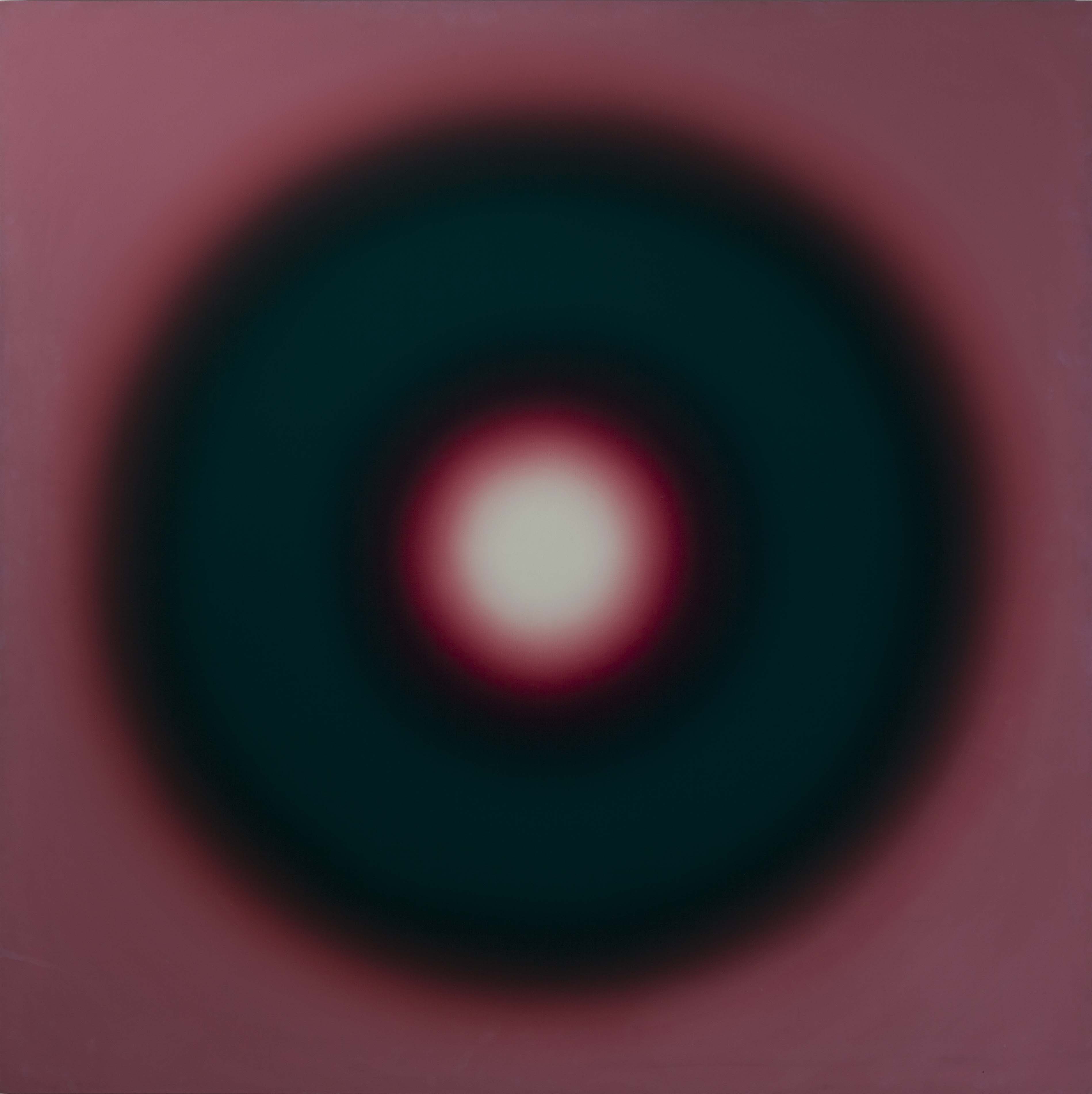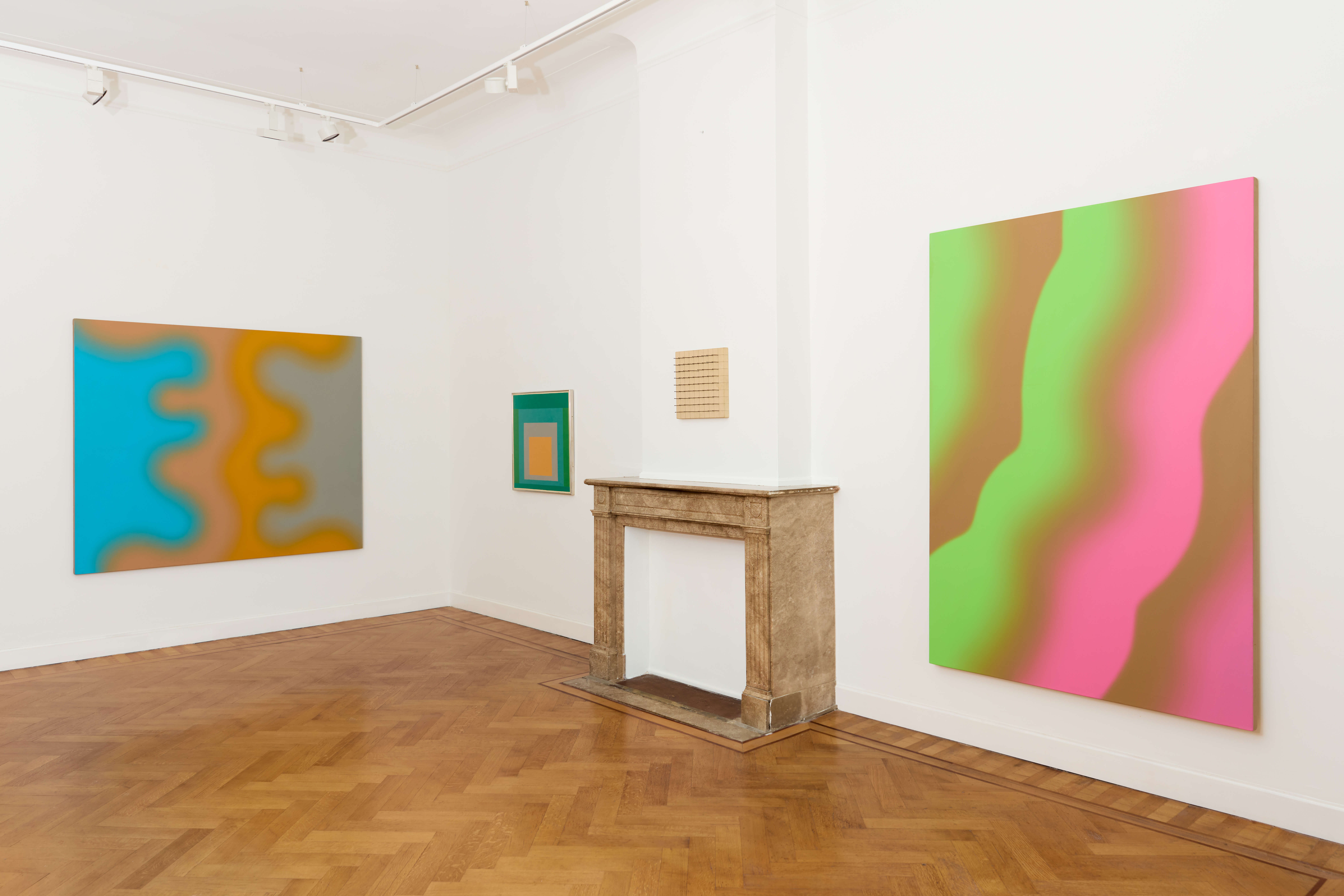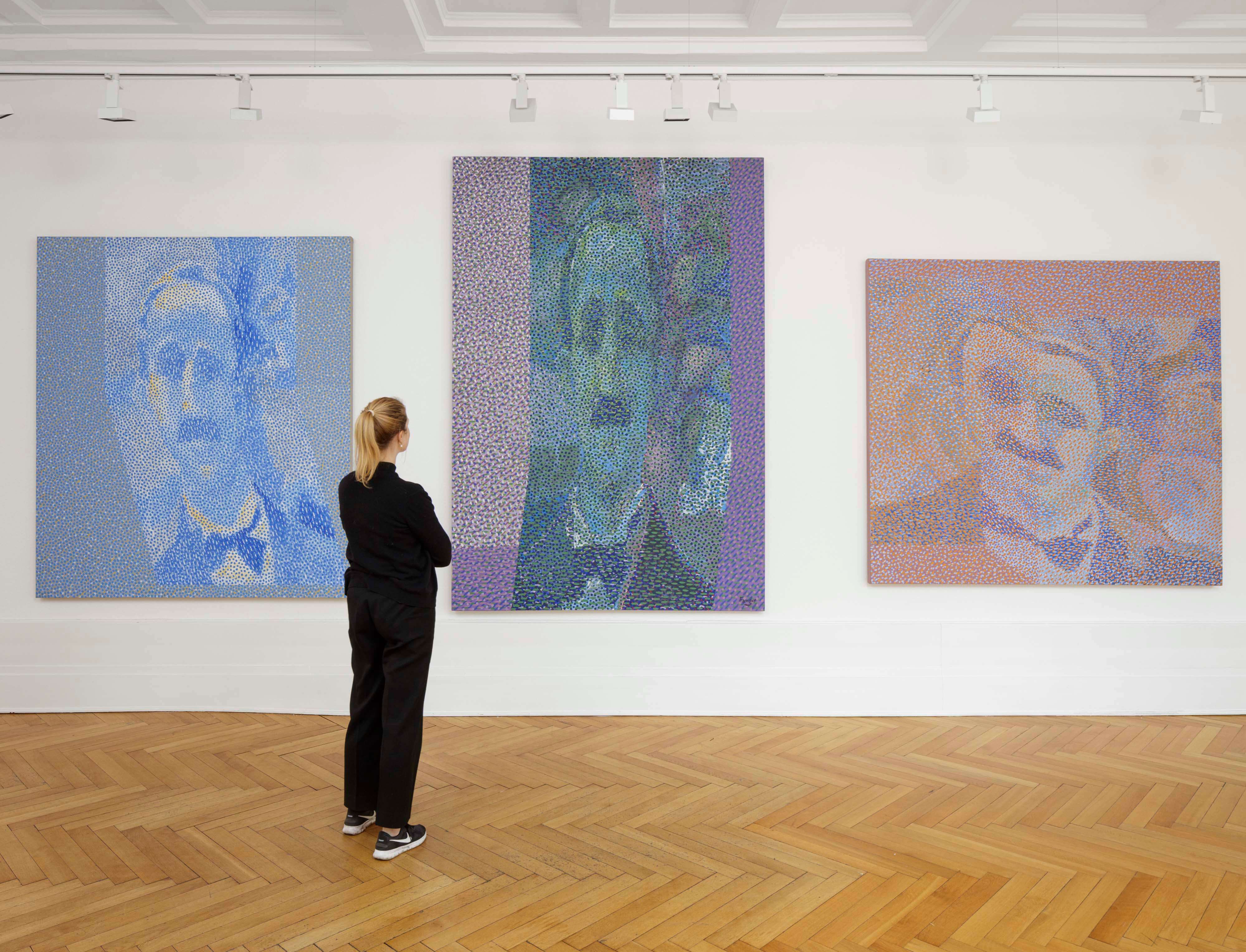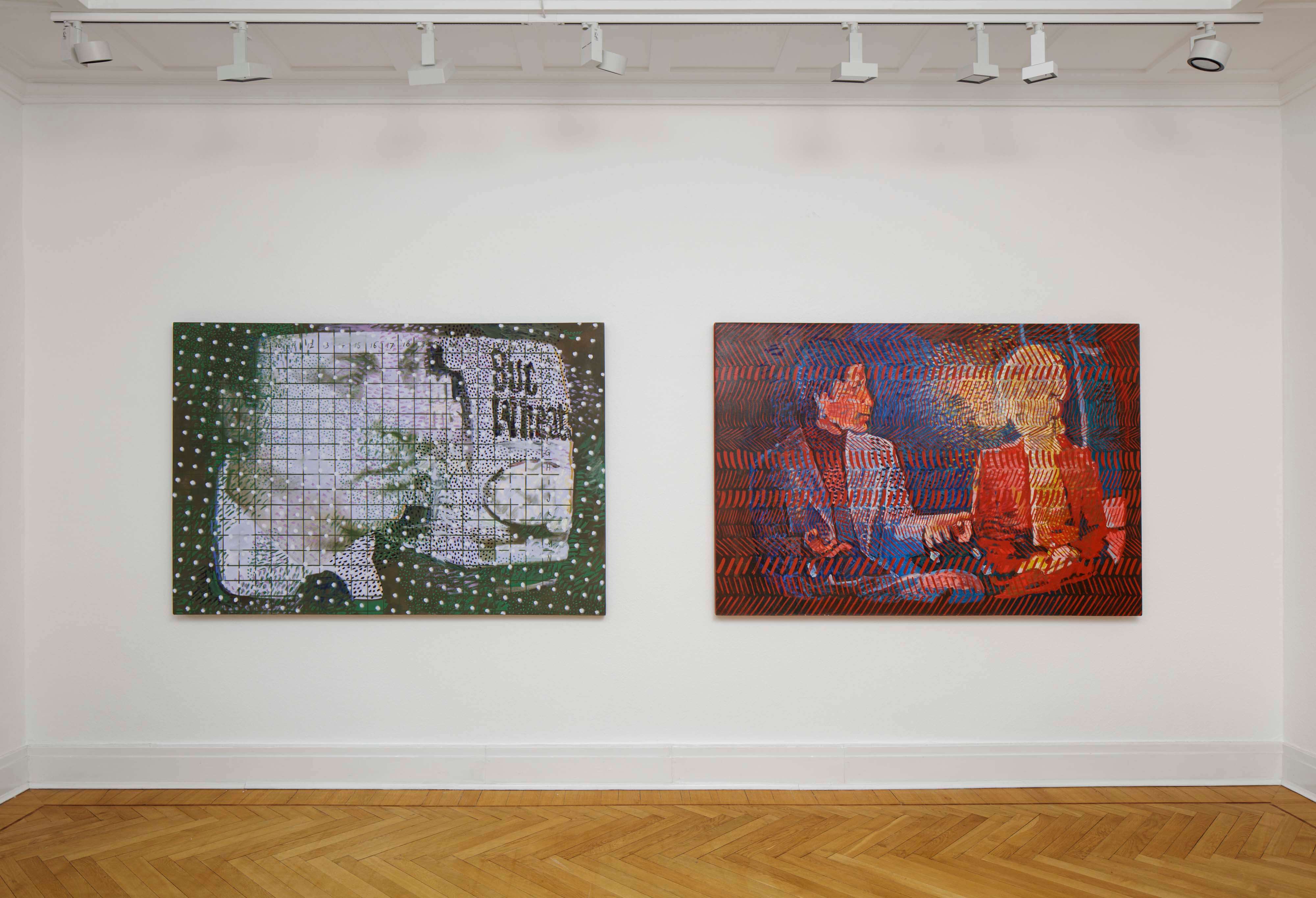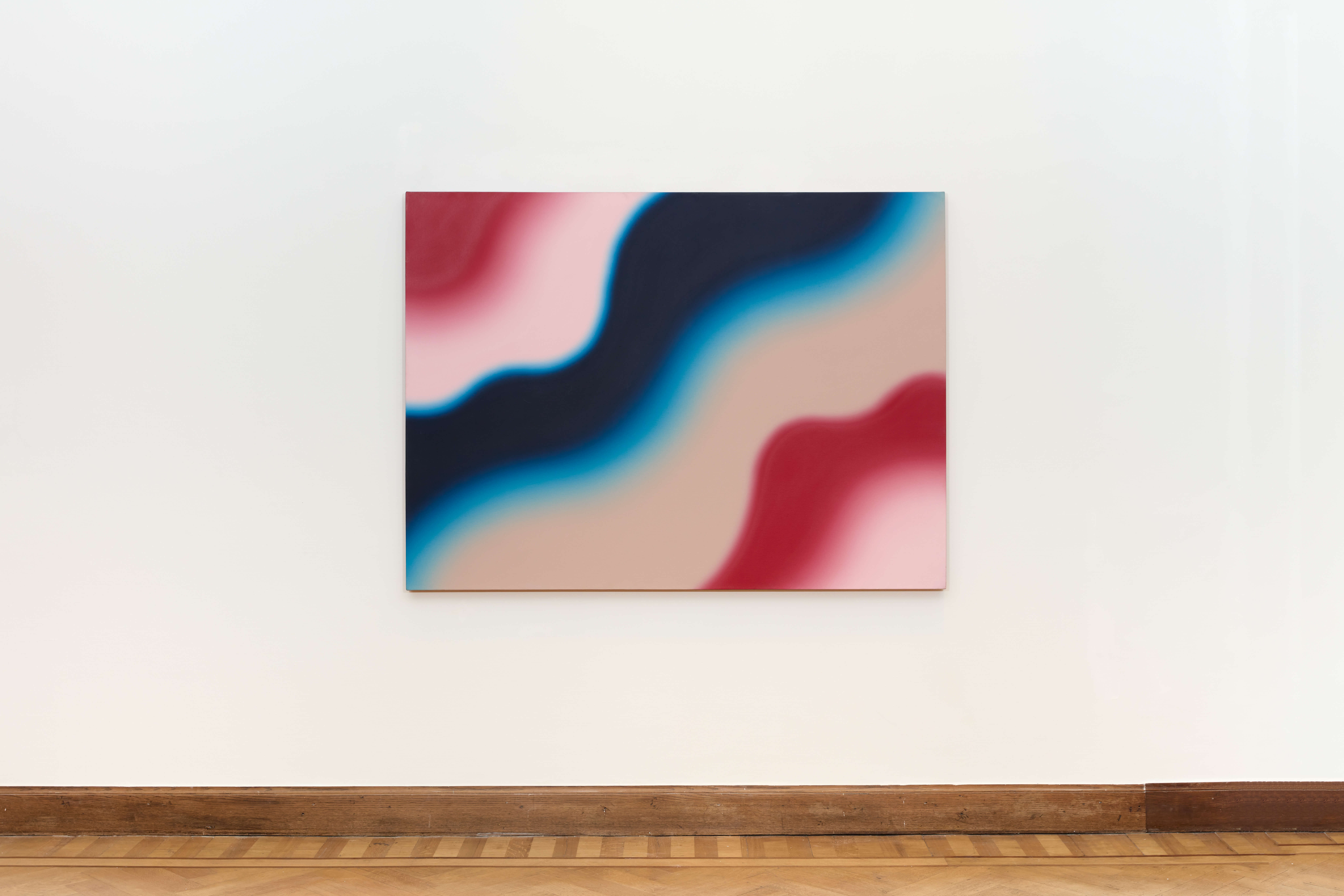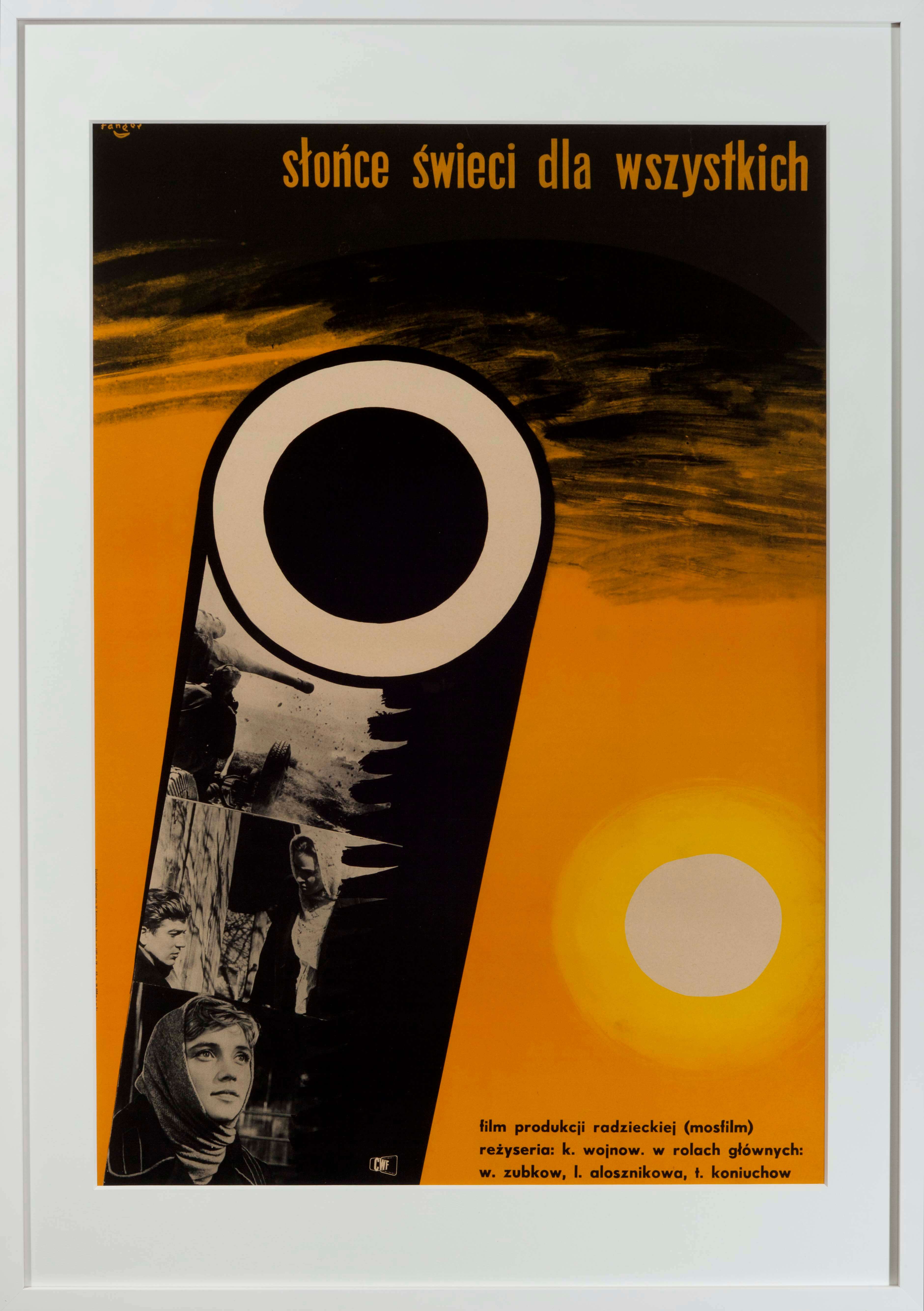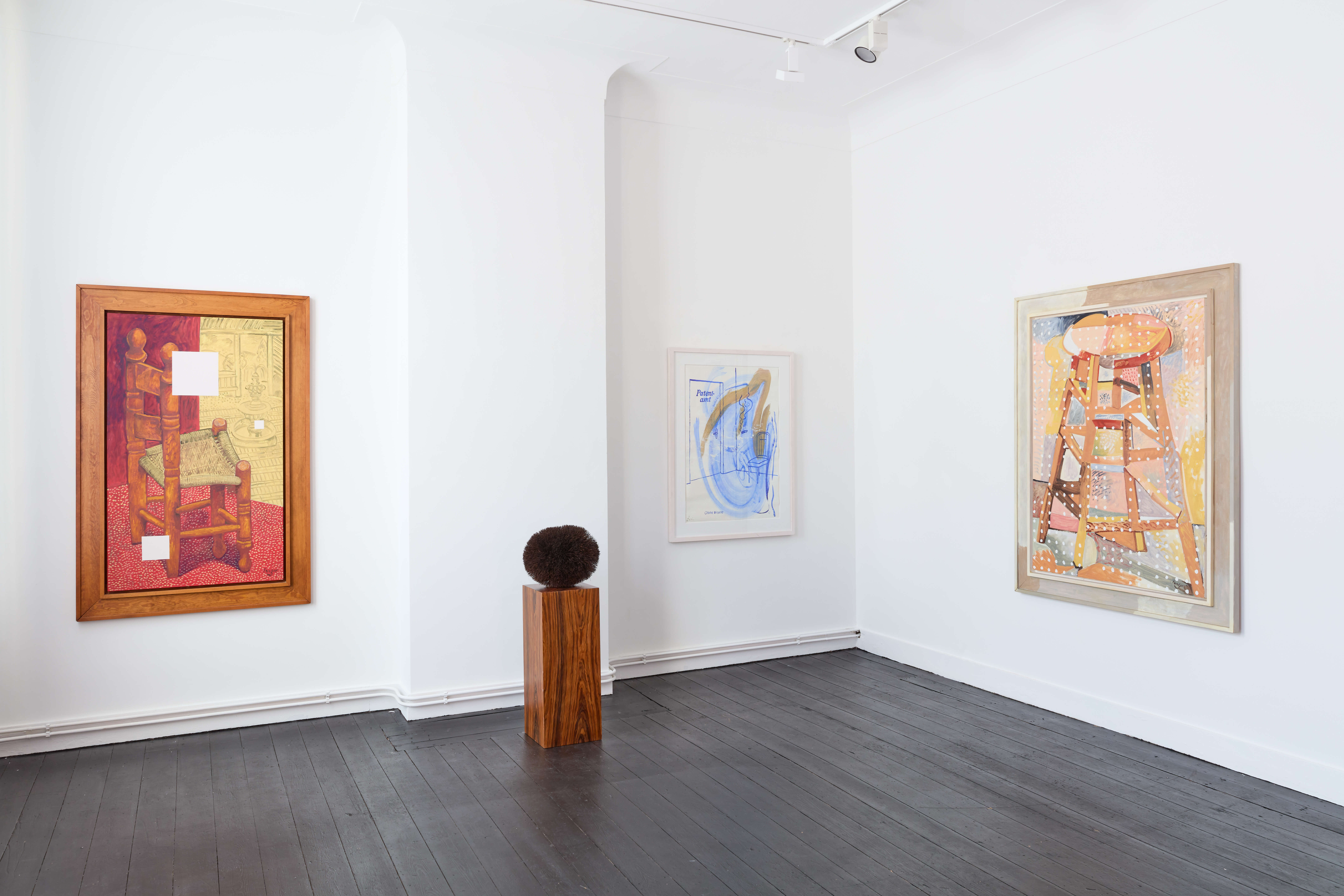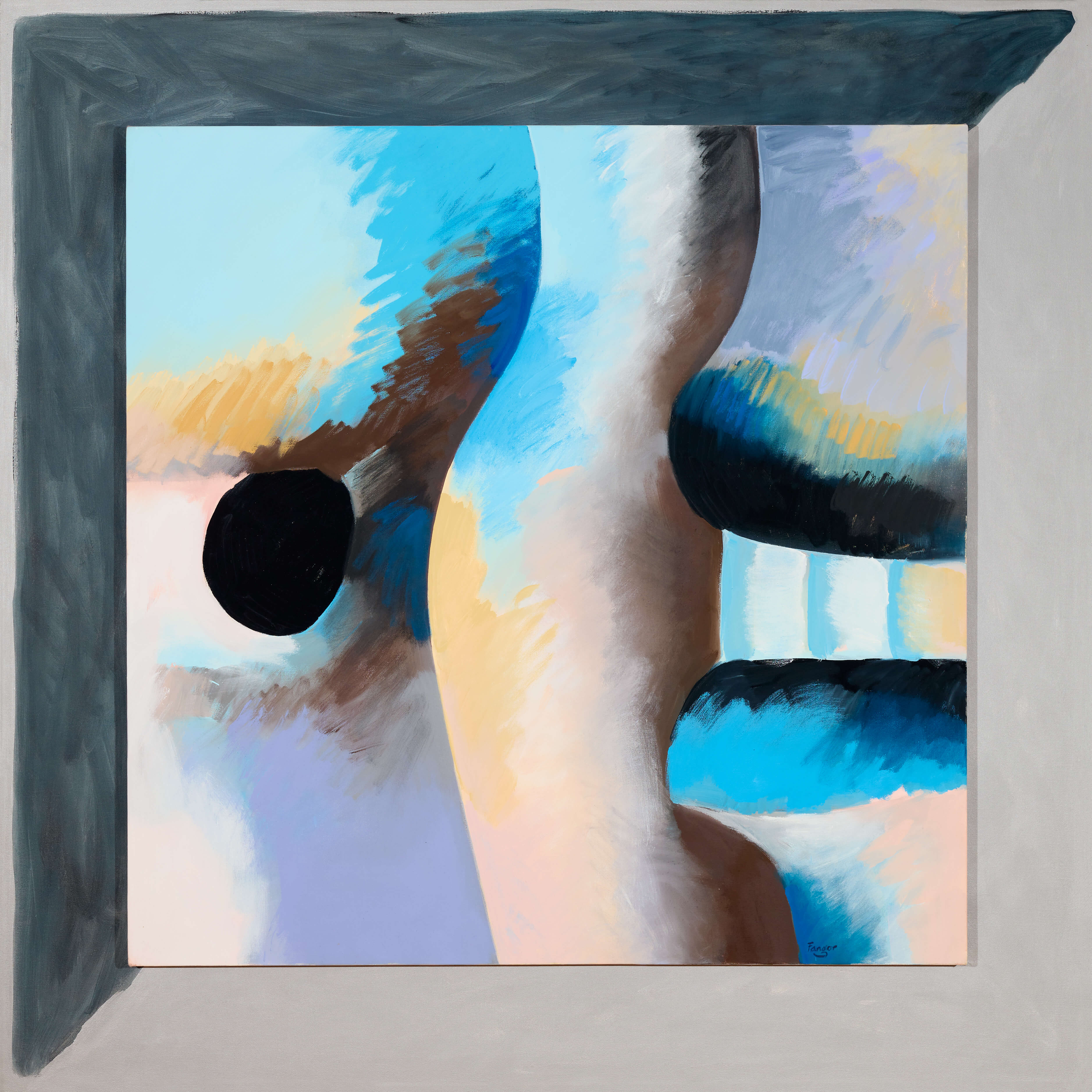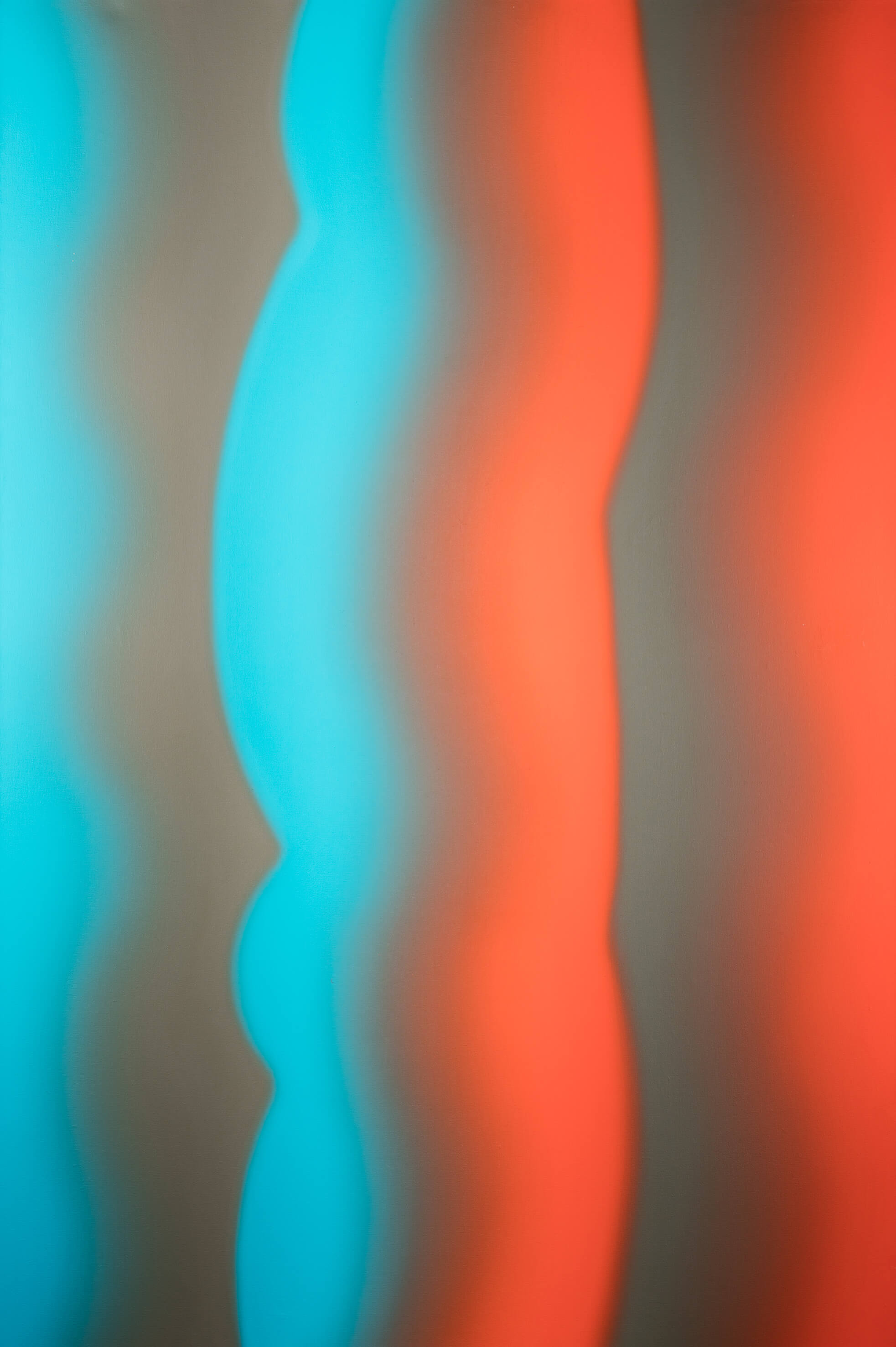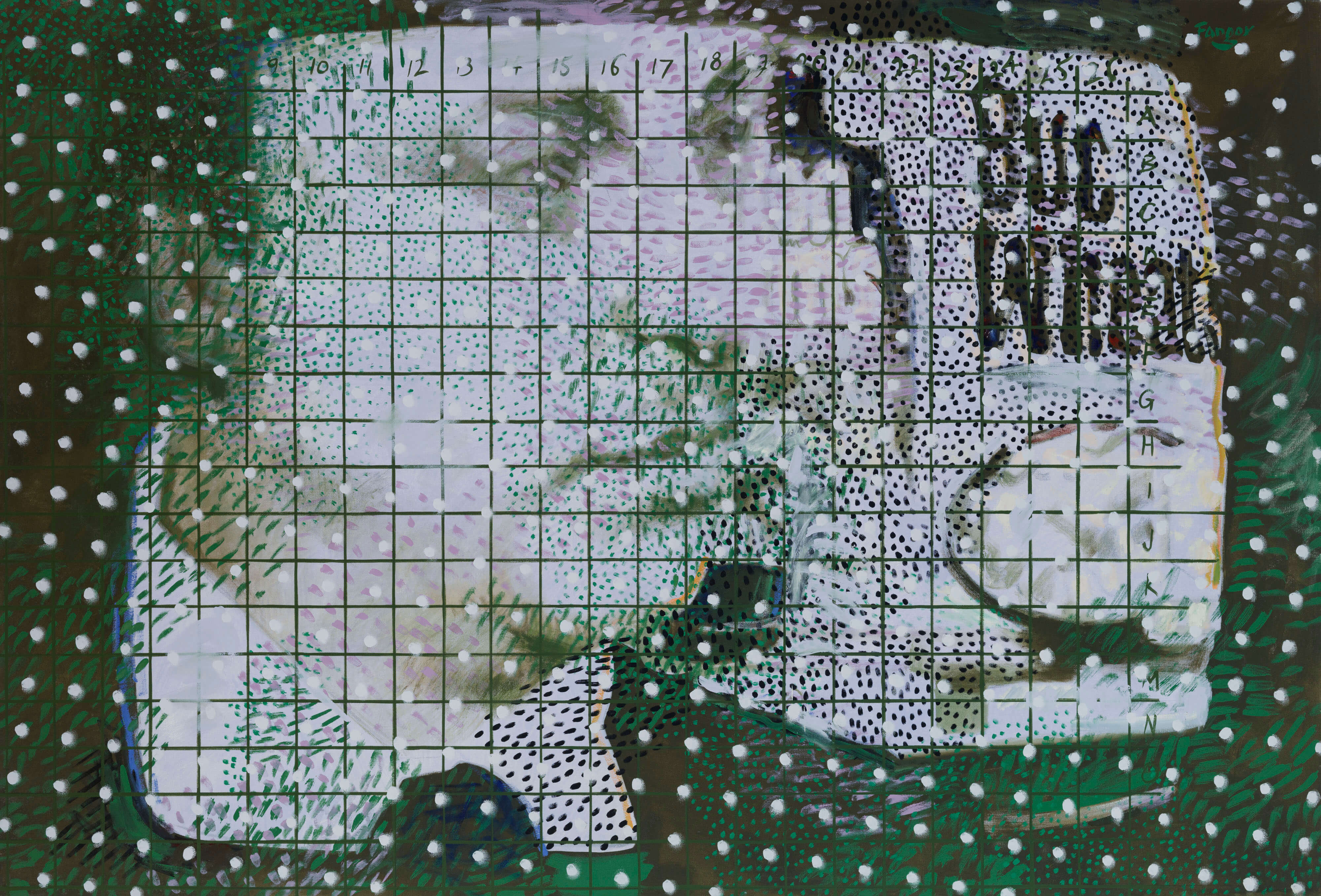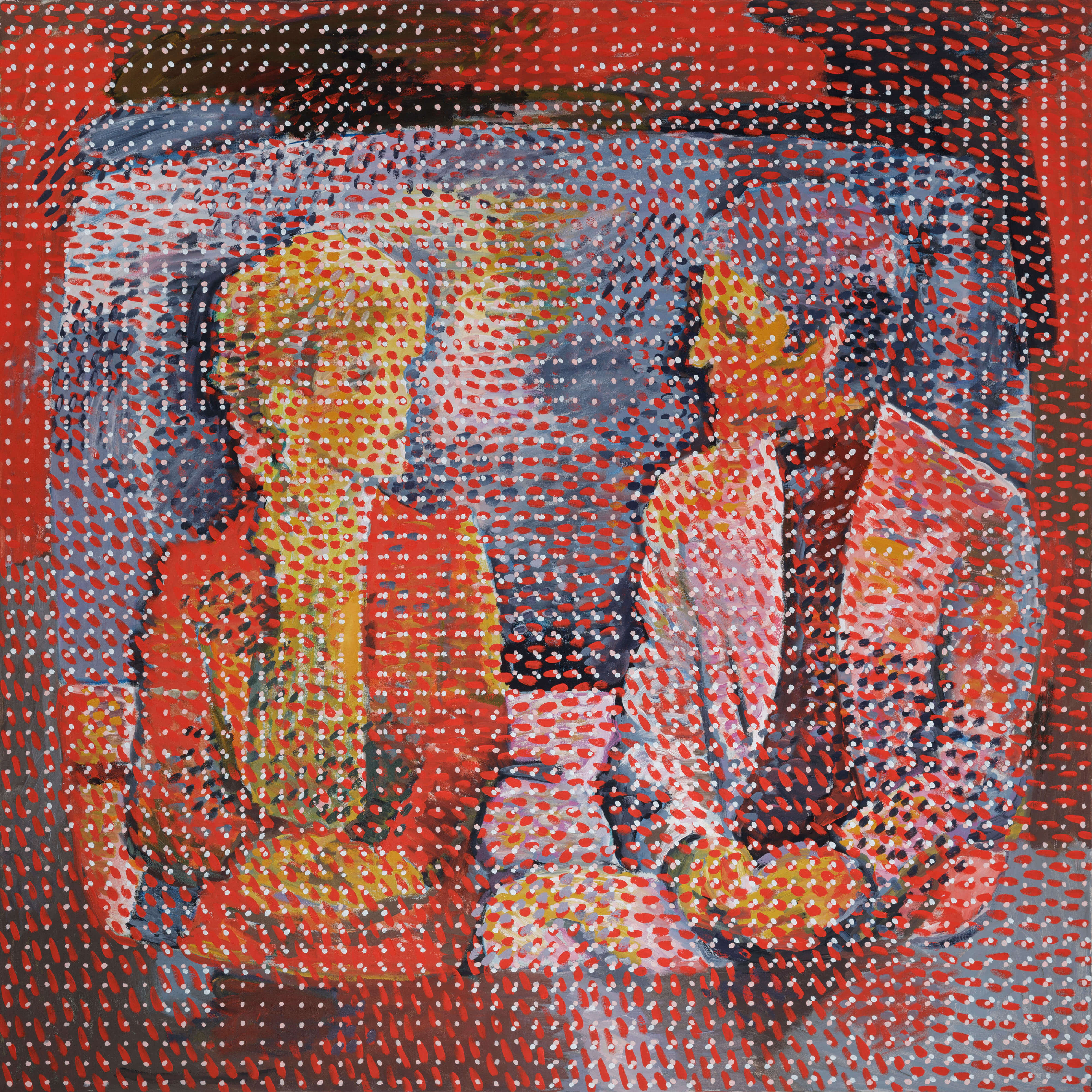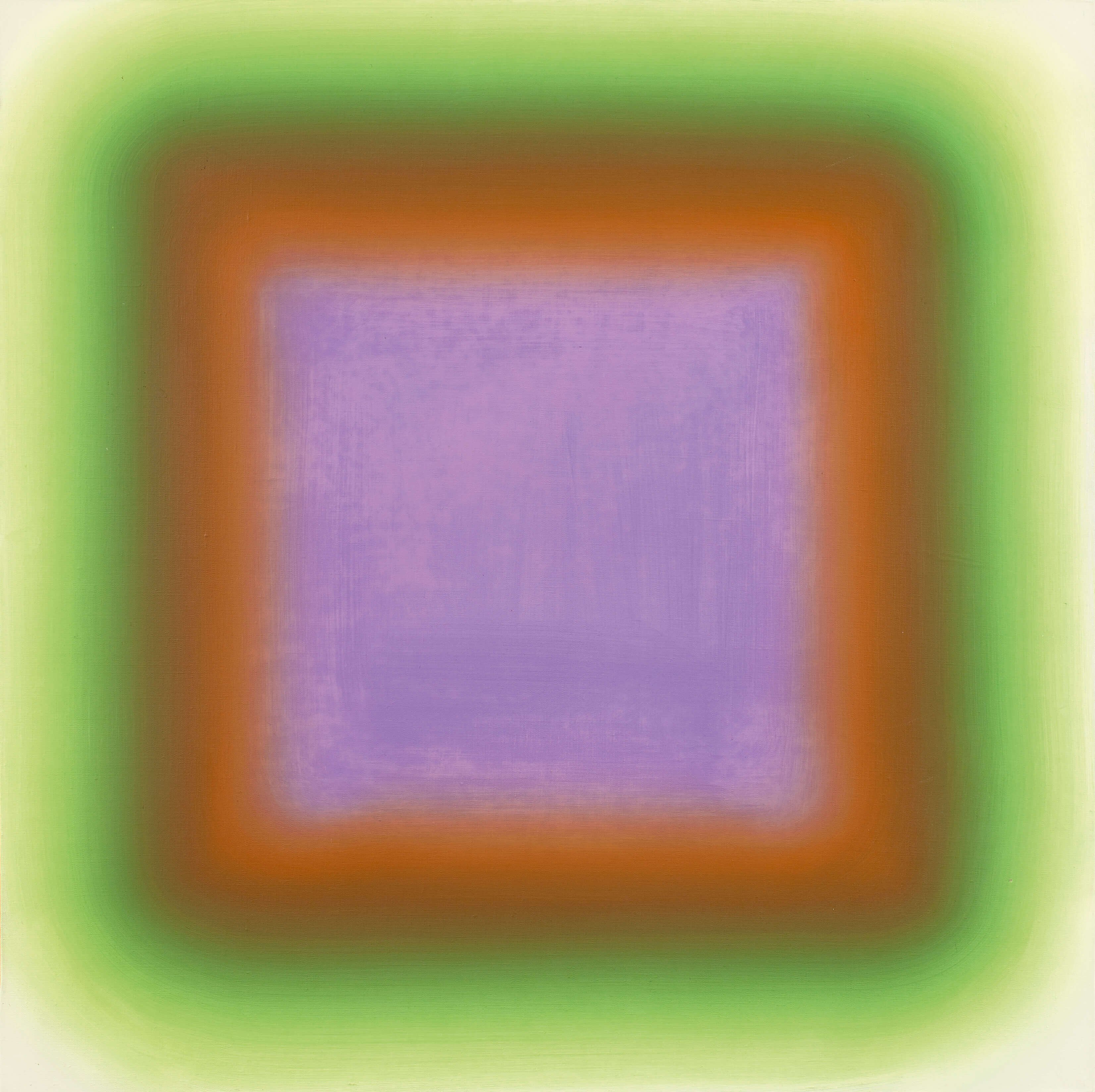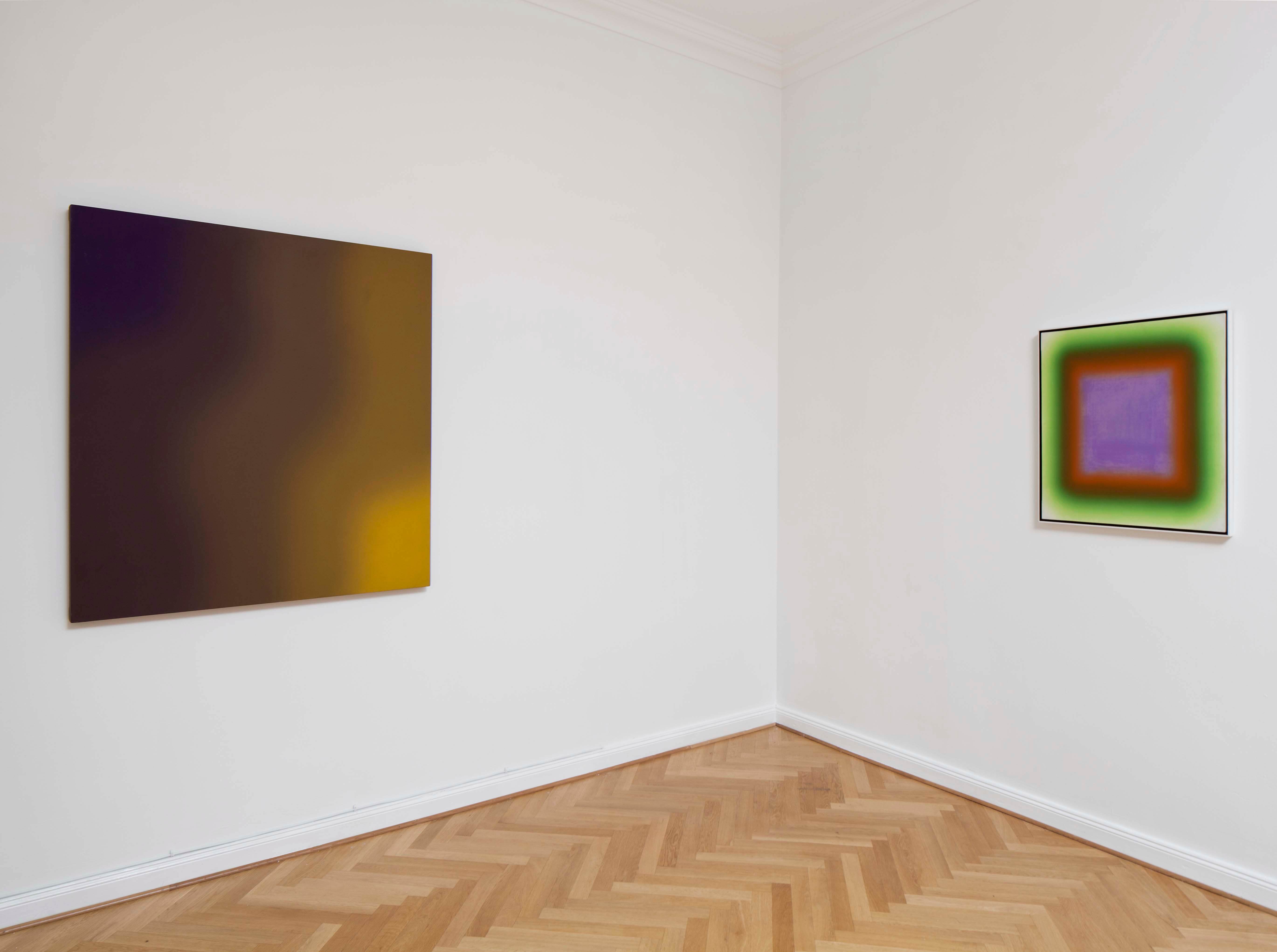Wojciech Fangor
During WWII Wojciech Fangor (b. 1922; Warsaw, Poland) studied privately with the renown painters Tadeusz Pruszkowski and Felicjan Szczęsny Kowarski. He graduated in 1946 from the Warsaw Academy of Fine Arts (ASP) where he later taught from 1953 till 1961. His main medium was painting, but he also worked with drawing, graphics, sculpture and public commissions, making his debut in 1949 with an exhibition of cubist landscapes and portraits. He gained popularity during the Social-Realistc period creating iconic works such as “Postacie” (“Figures”) (1950), “Matka Koreanka” (“Korean Mother”) (1951). Fangor was also one of the founders of the celebrated Polish Poster School. Between 1953 and 1961 he was employed as assistant professor at the Academy of Fine Arts in Warsaw.
A period of ideological and artistic reassessment resulted in Fangor’s groundbraking work “Studium Przestrzeni” (“Study of Space”) that he made in 1958 in collaboration with the architect Stanisław Zamecznik. This work has been broadly considered as the first environment ever: a form of art, in which the work expands into a physical space beyond the pictorial surface in order to engage with the viewer. This work prompted interest from Stedelijk Museum in Amsterdam, where Fangor’s exhibition “Color in Space” followed in 1959. Fangor’s ideas about space and spacial relations materialized in his seemingly borderless abstract paintings pulsating with colors that paved the way to his body of work that was often categorized as Optical Abstraction, although he himself preferred to speak about works addressing “positive illusionary space”. In 1965 Fangor was invited to participate in the travelling exhibition “The Responsive Eye”, curated by William Seitz at the Museum of Modern Art in New York, which, in hindsight, was the defining moment of international Op Art.
After short stays in Vienna, Paris, Bath, London and Berlin, Fangor emigrated to USA and in 1967 started to work with the Gallery Chalette that helped establishing his reputation among American collectors and museums. He taught at Fairleigh Dickinson University, Madison, NJ, USA (1967 – 1983) and was lecturer at the Graduate School of Design, Harvard University, Cambridge, MA, USA (1967–1968). In 1970 Fangor’s pulsating abstract paintings, invading the physical space of the viewer, earned him a solo exhibition at New York’s Guggenheim Museum. Curated by Margit Rowell and Thomas M. Messer, this mid-career survey was an astonishing achievement for an immigrant artist who had arrived in New York only four years prior.
After 1970 Fangor gradually abandoned abstraction. In 1973 Fangor collaborated with the renowned American ballet company of Martha Graham, who had asked him to design stage sets for her ballet “Mendicants of Evening”. The collaboration might have triggered Fangor’s interest in investigating the complex psychological and formal relationships between people, where space, again, plays a main role as a connecting and dividing element. In the series Interfaces Fangor reintroduced traces of figuration in order to combine “the rational blocks with emotional demons”, when focusing on human encounters. The 1970s were characterized by discovery of the physical human body as artistic medium, which resulted in the proliferation of performance art.
Between 1977 and 1984 Fangor worked (not exclusively) on the so-called “Television Paintings” in his studio in Manhattan. As several artists in that period, he was fascinated by the omnipresence of TV, its strong influence on people and its aesthetics. In his TV Paintings Fangor analyzed simultaneous realities offered by TV, again, using various formal effects to create the special relationship between the viewer and his works.
In 1999 he returned to Poland. In June 2002 he had a retrospective exhibition at the BWA Contemporary Art Gallery in Katowice and in 2003, at the Center for Contemporary Art at Zamek Ujazdowski in Warsaw. At this time, he created paintings that explored time and space in the image and cultural context, forms and artistic experiences. These works were presented in the 2005 “Exhibition of the Exhibition” at the Center of Polish Sculpture in Orońsko. It was a time of references to discoveries and theories from nearly fifty years ago, a time of artistic reflection on memory and the palimpsestic character of culture. The artist filled the beginning of the second decade of the 21st century with work on the Artistic Project of the 2nd line of the Warsaw Metro.
His work is included in the permanent collections of the Centre Georges Pompidou, Paris; Svetlik Art Foundation, Prague; Ludwig Forum für Internationale Kunst, Aachen; Neue Nationalgalerie, Berlin; Pinakothek der Moderne, Munich; Stedelijk Museum, Amsterdam; Centre of Polish Sculpture, Orońsko; Starak Family Foundation, Warsaw; Museum of Academy of Fine Arts, Warsaw; National Museum, Warsaw; Museum of Modern Art, New York; Solomon R. Guggenheim Museum, New York; Phillips Collection, Washington and the San Fransisco Museum of Modern Art, San Francisco, among many others.

